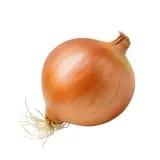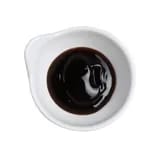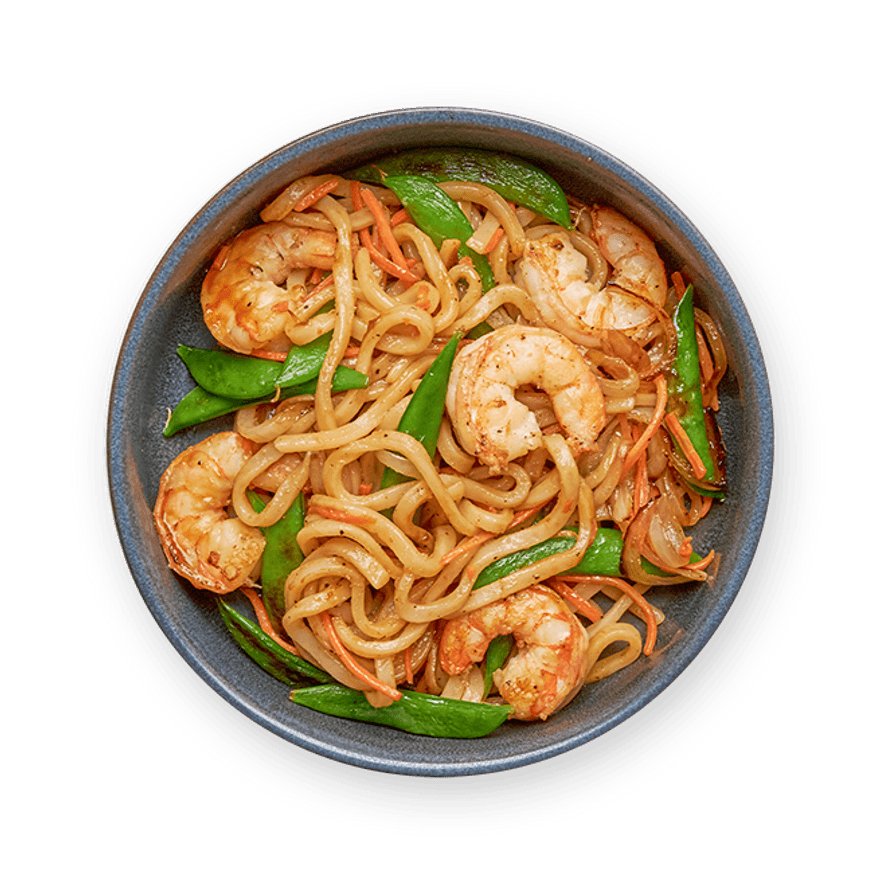Udon Shrimp Stir-fry
50 reviewsUdon know what you've been missing if you haven't tried this recipe yet !

Ingredients
Make sure you have...
Utensils
Frying pan, Stovetop
recipe

Step 1
If needed, thaw the shrimp. In a pot of boiling water, cook udon noodles according to package instructions. Drain & set aside.

Step 2
Peel & thinly slice the onion.


Step 3
Heat sesame oil on a pan over medium-high heat. Add sliced onion & stir fry 2-3 min, until onions begin to soften. Add sugar snap peas & 2 tbsp of water per serving. Stir, cover & steam the veggies for 3 more min.

Step 4
Uncover the veggies, stir & create an empty space in the center of the pan by pushing everything to the sides. Drizzle some oil in the center & add the shrimp in an even layer. Season with salt & sear for 2-3 min per side, until the shrimp are opaque.


Step 5
Add drained udon noodles to the pan, along with oyster sauce. Toss well to coat evenly. Add shredded carrots & mix it all together.
Step 6
Serve hot in a bowl with an extra drizzle of toasted sesame oil if you wish! Enjoy!
Personal notes
Add your own flavor!
Nutrition facts
Average estimated amount for one serving
| Energy | 388 cal. |
| Fat | 16 g |
| Carbohydrates | 30 g |
| Protein | 27 g |
| Fiber | 6 g |
Values are based on an average estimate for one serving. All nutrition information presented on Jow is intended for informational purposes only. If you have any concerns or questions about your health, please consult with a health-care professional.
On average, one serving of the recipe "Udon Shrimp Stir-fry" contains 388 Energy, 16 g of Fat, 30 g of Carbohydrates, 27 g of Protein, 6 g of Fiber.
Price per portion
| € | Nos recettes à -2 € par portion |
| €€ | Nos recettes entre 2 € et 4 € par portion |
| €€€ | Nos recettes à +4 € par portion |
Please note, the price above is dependent on your grocer and the available products in the grocery store you chose.
Scores


D Nutri-score
The Nutri-score is an indicator intended for understanding nutritional information. Recipes or products are classified from A to E according to their food composition to promote (fiber, proteins, fruits, vegetables, legumes, etc.) and foods to limit (energy, saturated fatty acids, sugars, salt, etc.).
D Green-score
The Green-score is an indicator representing the environmental impact of food products. The recipes or products are classified from A+ to F. It takes into account several factors on the pollution of air, water, oceans, soil, as well as the impacts on the biosphere. These impacts are studied throughout the product life cycle.
Retrieving reviews...


